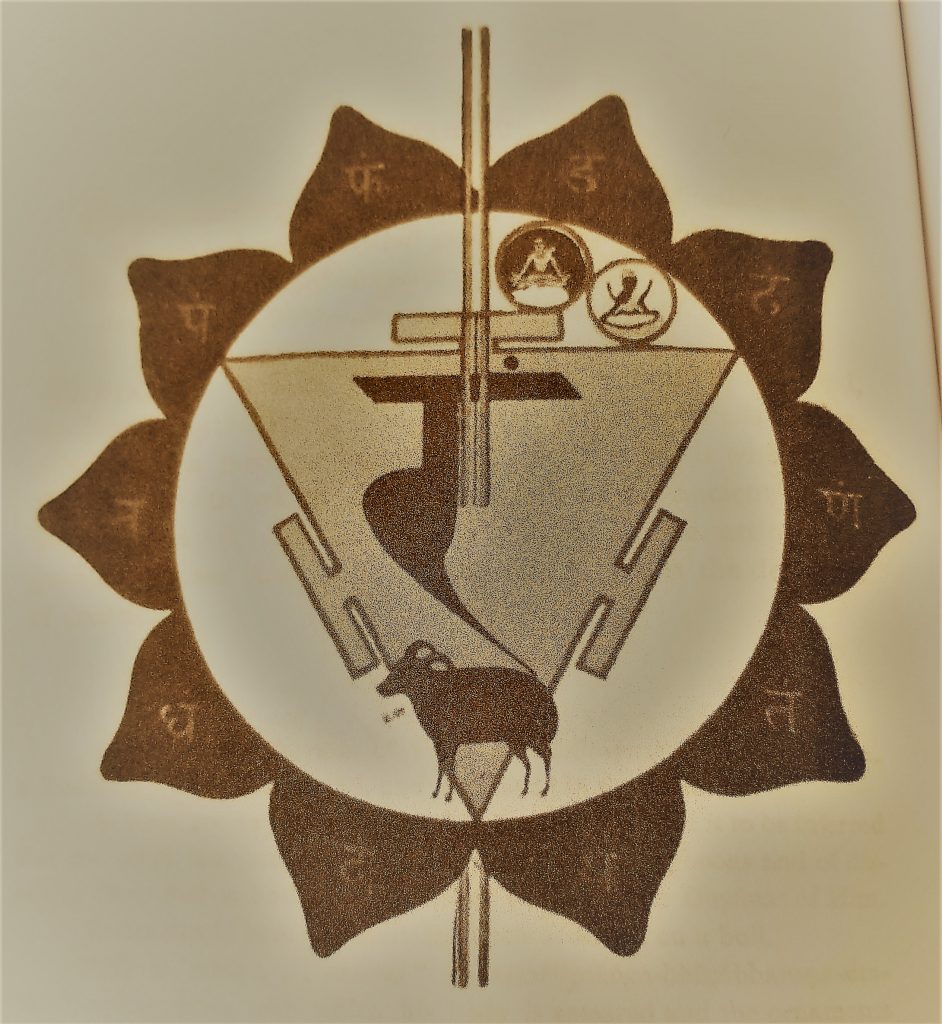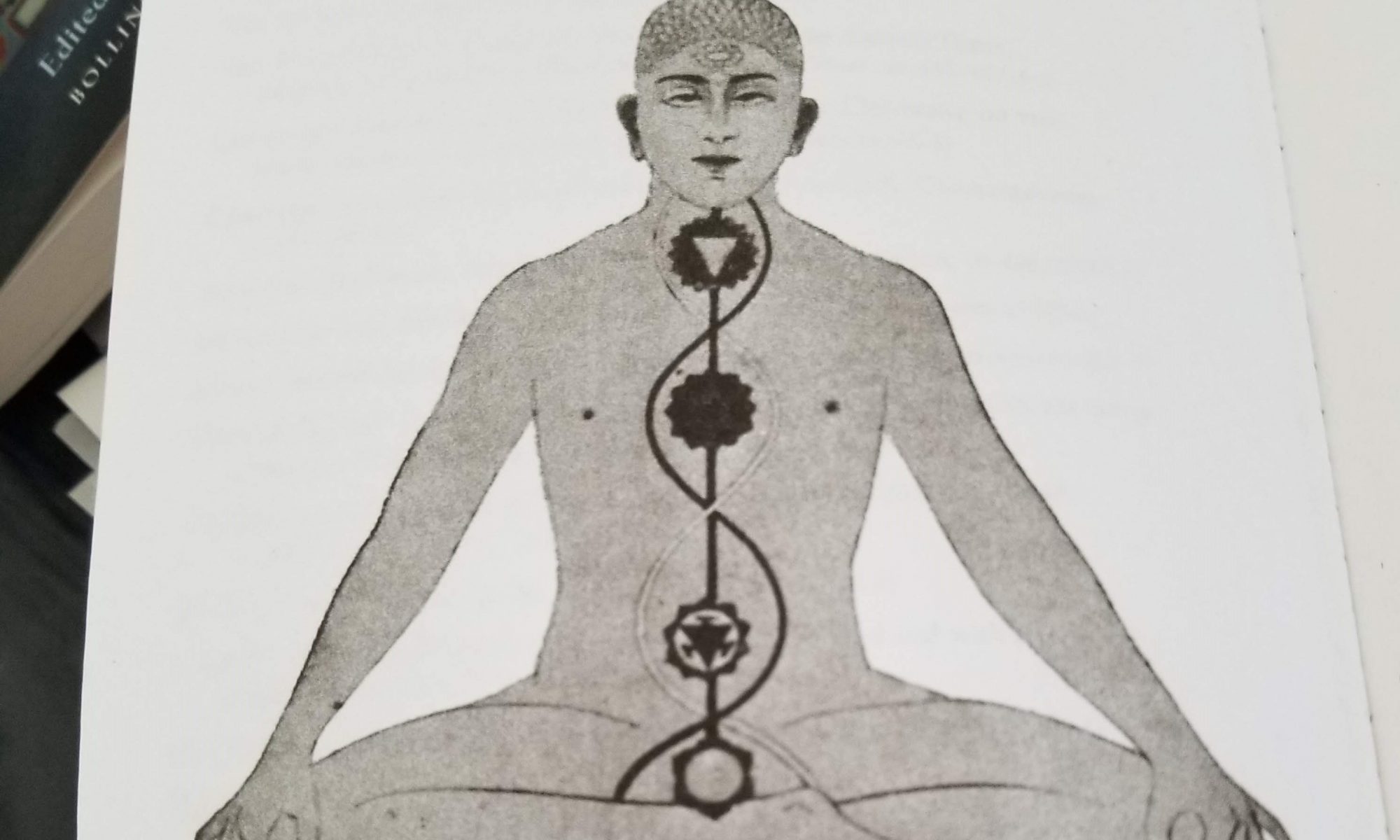Above it, and at the root of the navel, is the shining lotus of ten petals of the color of heavy-laden rainclouds…Meditate there on the region of fire, triangular in form and shining like the rising sun…
Description of the Six Centres – Verse 19
Manipura – the solar plexus chakra
We have now arrived at the third chakra, manipura. This chakra is located in the area between the navel and the diaphragm (the solar plexus) and is considered the center of emotions. Manipura translates to “lustrous gem” or “many precious jewels.” The “jewels” found when this chakra is aligned include qualities such as clarity, self-confidence, bliss, self-assurance, knowledge, wisdom, and wellbeing.
Think about terms like “go with your gut,” or “having a gut feeling.” These are examples of the intuition and wisdom that can be found within manipura. But if this chakra is not activated, we may not feel comfortable trusting out gut, or we may react to things emotionally or irrationally. When manipura is blocked, symptoms can manifest in digestion issues as well as low self-esteem, difficulty making decisions, neediness, or aggressive, rigid, and controlling behavior.
The mandala of manipura is surrounded by ten petals that represent the ten pranas which control the supply of energy to the body. Prana describes the concept of a universal energy that runs through all things (I guess we could call it “the force”). It also describes the way that energy is received and utilized in the body.

Within the mandala is the shape of an inverted triangle representing energy, growth, and development. The triangle is also the symbol for fire, the element of manipura. Fire has many interesting applications in this context. In one sense, the fire of manipura is the digestive fire (agni) which acts as the furnace powering the body. When the energy of this chakra is blocked, the fire causes aggression, passion, and restlessness. When it is activated the fire means purification and refinement, offering us the opportunity to free ourselves from bad qualities and habits.
The syllable associated with manipura is “ram” which also represents fire and purification by burning. And then, the ram is the animal represented within the mandala (I just love when things are matchy-matchy). For Jung, the significance of the ram is that it is a sacrificial animal. You have already overcome the worst danger, the danger of being drowned in unconsciousness by the makara of svadhisthana, you don’t need to fear the ram. Sacrificing the ram by activating this chakra is to sacrifice your passions and take control of your inner power.
The thing that I found most interesting about Jung’s interpretation of manipura was the was that he explained it as the rebirth following the symbolic death of svadhisthana. He linked this chakra, the fire center, to the rebirth of the initiation rites of the ancient Egyptian sun cult, the Greek myth of Apollo, and Christian baptism. So manipura is where one becomes part of the divine substance, having an immortal soul.
Activating manipura only bring Kundalini to the mid-point of her journey to connecting with the universe, but it gives us access to a tremendous amount of personal power. I’m looking forward to considering what the remaining chakras have in store for us. I have a gut feeling that it is going to be something good.

